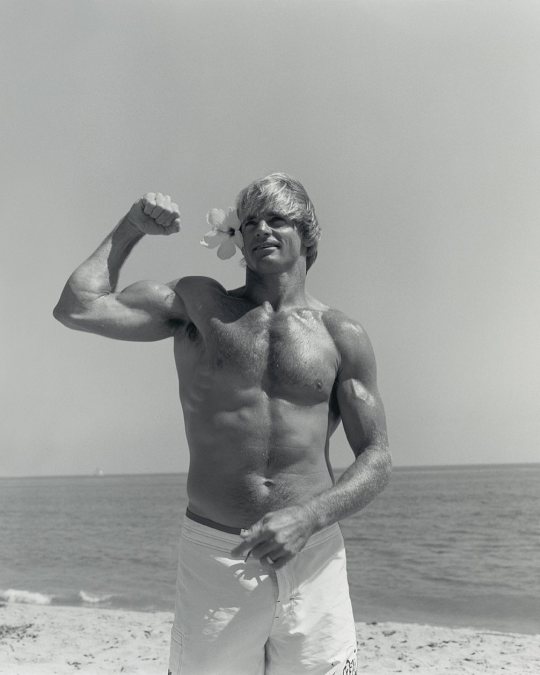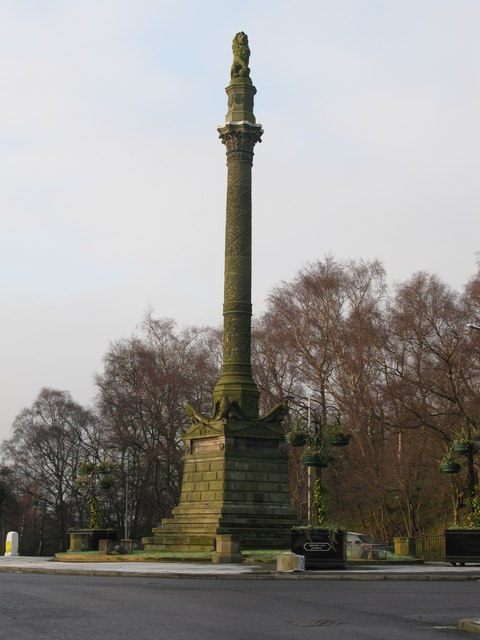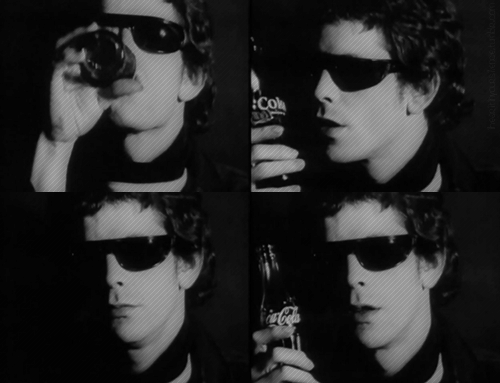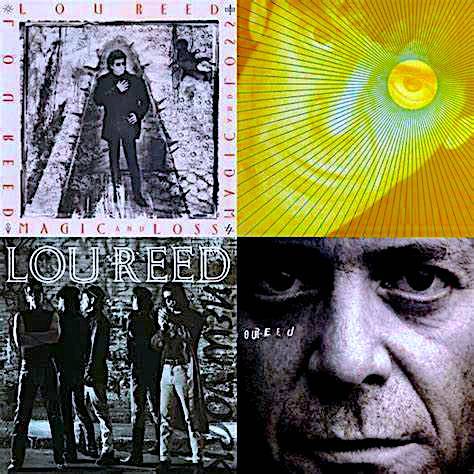#Laird Hamilton
Explore tagged Tumblr posts
Text

Laird Hamilton
202 notes
·
View notes
Text

laird hamilton
28 notes
·
View notes
Text
We’re all equal before a wave.
Laird Hamilton
3 notes
·
View notes
Text

Laird Hamilton (March 2, 1964) is an American big-wave surfer, co-inventor of tow-in surfing, and an occasional fashion and action-sports model and actor.
4 notes
·
View notes
Text

Bill & Laird Hamilton | Art Brewer
14 notes
·
View notes
Text
I have absolutely no ideas for writing whatsoever pleaseplease leave requests!!! Smut, angst, fluff, whatever y’all want I can probably do.
Ill write for these people and probably more that I forgot (all male character x fem!reader) :
Formula 1:
Max Verstappen
Oscar Piastri
Charles Leclerc
Lewis Hamilton
Carlos Sainz
Daniel Riccardo
Mick Schumacher
Franco Colapinto
Liam Lawson
Ollie Bearman
Criminal Minds
Spencer Reid
Aaron Hotchner
Derek Morgan
Marvel:
Bucky Barnes
Tony Stark
Thor
Deadpool
Steve Rogers
Spiderman (Tom Holland, Andrew Garfield, Miguel O'hara)
Harry Osborn (James Franco)
Wolverine (X-Men movies)
Cyclops (X-Men movies)
Charles Xavier (James McAvoy)
Call of Duty
Keegan Russ
Simon "Ghost" Riley
König
Phillip Graves
Kyle "Gaz" Garrick
Star Wars:
Anakin Skywalker
Obi-Wan Kenobi
Kylo Ren
Luke Skywalker
Han Solo
Outer Banks: (pls no spoilers s4 hasnt been watched yet)
JJ Maybank
Rafe Cameron
Topper Thornton
John B. Routledge
Ward Cameron
Harry Potter:
Harry Potter
Cedric Diggory
Draco malfoy
Ron Weasley
Fred Weasley
Blaise Zabini
Regulus Black
Severus Snape
Tom Riddle
Sirius Black
Lorenzo Berkshire
Oliver Wood
The Walking Dead:
Glenn Rhee
Daryl Dixon
Rick Grimes
Carl Grimes
Negan Smith
Sports:
Joao Felix
Jude Bellingham
Brock Purdy
Joe Burrow
Leon Draisaitl
Jack Hughes
Vince Dunn
Mitch Marner
Connor Bedard
Wayne Gretzky (young)
Miscallaneous:
Jack Champion (Ethan Landry)
Patrick Bateman
Batman (Christian Bale)
Johnathan Crane
Finnick Odair
Josh Hutcherson (Peeta Mellark, Mike Schmidt, Sean Anderson, Clapton Davis)
Rodrick Heffley
Tristan Dugray
Dylan O'brien
Bellamy Blake
Patrick Dempsey (Derek Shepherd, Ronald Miller)
Joe Goldberg
Timothee Chalamet (Wonka, Paul Atreides)
Minho (The Maze Runner)
Keanu Reeves (John Wick, Neo, Alex Wyler, Dr. Beckham, Julian Mercer, Ted Logan)
Jim Halpert
Farkas/Vilkas
Ulfric Stormcloak
Miraak
Ben Schnetzer (Max Vandenburg, Brad Land, Russ Sheppard)
Ralph Macchio (Daniel Larusso, Johnny Cade)
Dallas Winston
Sodapop Curtis
Robby Keene
Zuko (atla dallas liu)
Jet (atla sebastian amoruso)
Cillian Murphy (Johnathan crane, jackson rippner, Neil Lewis)
Evan Peters (all ahs characters, Luke cooper)
James Franco (Laird Mayhew, Harry Osborn, all characters)
What I wont do:
Pedophilia
Beastiality or anything animal-y
Waterworks
Male reader (sorry)
Character x character
Threesomes or anything not 1x1
Character x oc
Specific body types (i just don’t see the point)
Daddy/mommy kinks
Incest or stepcest
(I’ll prob have to add on but its midnight rn)
#f1#f1 imagine#angst#f1 x reader#formula 1#formula 1 smut#formula1#criminal minds fluff#criminal minds#spencer reid fluff#spencer reid#aaron hotchner#aaron hotch x reader#derek morgan#derek morgan x reader#max verstappen angst#max verstappen imagine#charles leclerc#oscar piastri#oscar piastri x reader#lando norris#lando norris x reader#sebastian stan#sebastian stan x reader#marvel#marvel imagine#bucky barnes#chris evans#rodrick heffley#sam and colby
168 notes
·
View notes
Text
sometimes i think about how alexander hamilton was the grandson of this dude named alexander hamilton who was a scottish laird with a castle and all
and basically all of alrxander hamilton (the grandfather)'s chidlren didnt really rise up that well, especially james hamilton who was poor and struggling despite being a sort of prince
and i just imagine alexander senior writing to alexander junior once he heard how much alexander worked and rose up like 'u are the only person in this family who is not a fucking disappointment'
39 notes
·
View notes
Photo

Alexander Hamilton
Alexander Hamilton (1755/57-1804) was a lawyer and politician, often recognized as a Founding Father of the United States. He served as George Washington's aide-de-camp during the American Revolution, before going on to become the first US secretary of the treasury and a leader of the Federalist Party. He was mortally wounded in a duel with Aaron Burr in July 1804.
Early Life
Alexander Hamilton was born on the small island of Nevis in the British West Indies on 11 January 1755 or 1757; most modern scholars favor 1755 as his birth year, based on the discovery of a 1768 probate paper that listed his age as 13. He and his older brother, James, Jr., were born out of wedlock to James Hamilton, the wayward younger son of a Scottish laird, and Rachel Faucette Lavien, a married woman who had abandoned her husband after years of unhappy marriage. The couple lived together for several years until 1765, when James Hamilton abruptly deserted his family, either because he had run out of money or because he knew his continued presence would leave the still-married Rachel vulnerable to charges of bigamy. In any case, Rachel was left destitute. To provide for her sons, she opened a modest shop on St. Croix, purchasing her merchandise from her landlord. In early 1768, both Rachel and Alexander contracted yellow fever; while the boy soon recovered, the mother succumbed to the disease on 19 February.
The orphaned Hamilton brothers were sent to live with a cousin, Peter Lytton, but this situation would end after only a year when Lytton committed suicide. The brothers were then split up; James, Jr., was apprenticed to a carpenter, while Alexander found work clerking for the merchant house of Beekman and Cruger. Still only a teenager, Hamilton excelled at his various tasks, which included tracking cargo, helping to chart courses for ships, and calculating prices in multiple currencies. In 1771, he was even left in charge of the firm for five months while the owner was away. Hamilton was a voracious reader who aspired to write works of his own and penned several poems in the early 1770s. In the autumn of 1772, he wrote a letter to his father in which he detailed a hurricane that had recently devastated St. Croix. The letter found its way into publication in a local paper, the Royal Danish-American Gazette, leaving readers dazzled with its vivid and bombastic descriptions:
It seemed as if a total dissolution of nature was taking place. The roaring of the sea and wind, fiery meteors flying about it in the air, the prodigious glare of almost perpetual lightning, the crash of falling houses, and the ear-piercing shrieks of the distressed, were sufficient to strike astonishment into the angels.
(quoted in Chernow, 37)
This essay would prove to be one of the most consequential of Hamilton's life; upon learning that its author was only 17, local community leaders pooled their funds to send the promising young man to college in North America. He landed in Boston in October 1772, before going on to New York City, where he would enroll in King's College (present-day Columbia University) the following year. Hamilton was insatiably ambitious and dove into his studies, which included a classical curriculum of Greek and Latin as well as rhetoric, history, mathematics, and science. His academic career would soon be interrupted, however, by the rising tensions between Great Britain and the Thirteen Colonies over the question of American liberties, particularly that of taxation without representation. Hamilton became swept up in the Whig (or Patriot) movement, writing a series of anonymous pamphlets in which he defended the Boston Tea Party, supported the actions of the First Continental Congress, and condemned Parliament's Intolerable Acts. He opposed the mob violence often displayed by fellow Patriots; on 10 May 1775, he saved the college's Loyalist president, Myles Cooper, from an angry mob by speaking to the crowd long enough to allow Cooper to escape.
Continue reading...
20 notes
·
View notes
Text


On July 30th 1547 those responsible for the murder of Cardinal David Beaton surrendered St Andrews Castle to French forces.
The siege of St Andrews was one of the defining events in the early struggles to bring the reformation to Scotland.
It was in 1546 that the castle was under siege, after the dramatic murder of Cardinal James Beaton who had been stabbed then hung naked from the castle walls. He had made many enemies during the reformation, one of the most turbulent periods of Scotland’s past, and his execution of the prominent and charismatic Protestant preacher George Wishart, gave these men the perfect excuse to move against him. His murderers, a group of mainly Fife lairds, occupied the castle afterwards and were supported in their actions by the English.
Scotland’s Regent, James Hamilton, 2nd Earl of Arran, ordered his troops to re-take the castle, capture the intruders and regain control of the wayward castle. The siege was to last more than a year, but in November 1546 the French ambassador reported that the besiegers were digging a mine beneath the castle walls in an attempt to undermine and collapse the huge fore tower. The defenders were simultaneously countermining in a desperate attempt to prevent this from ever occurring.
There were two unsuccessful attempts to intercept the mine, located in the rooms now found off the entrance to the castle. It was not easy to work out where the attackers were coming from when you just had the disorientating noise coming through solid rock. They were eventually abandoned and a third shaft was dug to the east of the fore tower.
The first tunnel was inaccurate, swinging too far to the east, and they had to divert the tunnel again to get back towards the mine. They broke through eventually, and were able to repel the besiegers. Afterwards, the mine and it’s countermine were filled in to prevent them ever being used again until they were discovered during building work in 1879. The entrance to the mine can be seen on the far side of the road beside the castle, covered by a manhole cover.
The mine itself is a spacious corridor where one can comfortably stand upright, and it is wide enough to enable pack animals to assist with the removal of the mined rock. It features carved steps, and it is quite easy to traverse. By contrast, the countermine is narrow, twisted and at times you almost must almost crawl to get through, showing the desperation of the defenders as they worked to head off the attack as soon as possible.
The siegers? Well remarkably their lives were spared, some were imprisoned in France while others, including Knox, were condemned to the galleys.
Pics are the castle ruins and the counter mine.
There's a much more in depth article on the siege here over two pages https://tudortimes.co.uk/military-warfare/siege-of-st-andrews
26 notes
·
View notes
Text

"All the people I know who have been bitten by sharks are less afraid of sharks now. Every one of them. I think they imagined being attacked by a shark would be so much worse than it actually was." - Laird Hamilton
#feral beast#shark#courage#growth#shadow work#primal pair#poly#trust#acceptance#nothing is impossible#everything is permitted#left hand path#paradox
9 notes
·
View notes
Text
The Battle of Langside
Fought on May 13th, 1568, the battle of Langside was fought just south of Glasgow, Scotland, between forces loyal to Mary, Queen of Scots, and forces acting in the name of her infant son James VI. Mary’s short period of personal rule ended in 1567 in recrimination, intrigue, and disaster when, after her capture at Carberry Hill, she was forced to abdicate in favour of James VI. Mary was imprisoned in Lochleven Castle, while her Protestant half-brother, James Stewart, Earl of Moray, was appointed Regent on behalf of his nephew. In early May 1568 Mary escaped, heading west to the country of the Hamiltons, high among her remaining supporters, and the safety of Dumbarton Castle with the determination to restore her rights as queen.

It was Mary's intention to avoid battle if possible, retiring instead to Dumbarton Castle, still held for her by John Fleming, 5th Lord Fleming. Here she would be in a virtually impregnable position, well placed to receive the expected reinforcements from the north, and then recover her hold over the country by degrees. With the intention of by-passing Moray she marched to Rutherglen Castle meeting loyal supporters and then on a wide circuit past Glasgow, intending to move by way of Langside, Crookston, and Paisley back towards the River Clyde, and then on to Dumbarton on the north side of the Clyde estuary.
Moray drew up his army on the moor close to the village of Langside, then several miles south of Glasgow but now well within the city. Kirkcaldy, observed that Mary's force was keeping to the south of the River Cart, the Regent's army being on the opposite bank. He ordered hackbutters (musketeers), mounted behind each of his horsemen, to cross the river. They took up positions among the cottages, hedges, and gardens of the village, on each side of a narrow lane, through which Mary's army must defile. Meanwhile Moray continued to deploy the rest of the army, the vanguard under the command of the Earl of Morton leading the march across a nearby bridge. The whole army then deployed the right around the village. No sooner was this complete than the Queen's vanguard, commanded by Lord Hamilton, began its advance through the village. The battle was now under way.
Mary's army was commanded by Argyll, who was to show little in the way of real military skill, seemingly hoping simply to push Moray aside by sheer force of numbers. George Buchanan wrote that Argyll fainted at one point, though this is almost certainly a rumour spread by his enemies. With her army now engaged, the Queen stood half a mile distance to the rear, close to Cathcart Castle on a mound since named as the Court Knowe. As Hamilton attempted to force a passage through Langside he was met by close fire from Grange's hackbutters. Many in the front ranks were killed, throwing the remainder back on those following, and adding to the general confusion. Hamilton pushed on, finally reaching the top of a hill, only to find the main enemy army drawn up in good order. Morton with the border pikemen advanced to intercept Mary's vanguard. Both sides now met in 'push of pike'. According to James Melville of Halhill the forest of inter-locked spears was now so thick that staves and discharged pistols thrown at the enemy simply rested on the shafts rather than falling to the ground.

Grange, whom Moray had allowed considerable leeway, continued to act with courage and distinction. According to James Melville, "the Regent committed unto the laird of Grange, the special care, as an experienced captain, to oversee every danger, to ride to every wing and encourage and make help where the greatest height was". The battle was now at its height and the outcome still doubtful, until Grange saw that the right wing of the Regent's army – consisting of the barons of Renfrewshire – was beginning to lose ground. He immediately galloped to the main battalion and brought reinforcements. This was done so effectively, and the counter-attack pressed with such force, that it broke the enemy ranks. Moray, who hitherto had stood on the defensive, repulsing Mary's cavalry, now charged at the main enemy battalion, the fight now joined all along the line. The Queen's men crumbled, the fugitives being closely pursued by a party of Highlanders. The Battle of Langside, which had lasted for some forty-five minutes, was over.
Langside was a colossal defeat for Mary. Only one of Moray's men was killed, whereas over 100 of Mary's men were lost, a figure that almost certainly would have been much higher but for Moray's decision to avoid further bloodshed by ordering a halt to the pursuit. Over 300 of Mary's men were taken prisoner, including Lord Seton and Sir James Hamilton and many of his followers. Mary and her escort rode off, first trying to reach Dumbarton Castle, but then turning south, eventually arriving at Dundrennan Abbey. From here she left for England, never to see Scotland again.
Mary crossed the Solway Firth to Workington on 16 May 1568 at night with twenty companions. This unexpected event provoked a dispute amongst the English border officials. She stayed her first night at the house of Heny Curwen.[ On the next day she moved to Cockermouth and was greeted by Richard Lowther, the deputy of Lord Scrope at Carlisle Castle. Lowther escorted Mary to Carlisle on 18 May. Meanwhile, the Earl of Northumberland who was at Topcliffe heard the news from Workington, which was in his jurisdiction. The Earl obtained a letter of authority from the Council of the North at York to be the Scottish Queen's host and to "let none of them escape." When the Earl arrived at Carlisle on 22 May, Richard Lowther defied him, and the Vice-Chamberlain of England, Francis Knollys, upheld Lowther's actions.
Over the next five years Mary's supporters in Scotland continued a civil war with the Regents of Scotland.

#history#military history#scotland#scottish#scottish history#queen mary#mary queen of scots#16th century#marian civil war
15 notes
·
View notes
Text






HAPPY BIRTHDAY to Desi Arnaz, Benedict of Nursia, Moe Berg, Ed Bournemann, Dale Bozzio, Larry Carlton, Karen Carpenter, John Cowsill, Daniel Craig, John Cullum, Eddie “Lockjaw” Davis, Maxwell Street, Jimmy Davis, Becky G, Rory Gallagher, John Gardner, Mikhail Gorbachev, Laird Hamilton, Sam Houston, Bryce Dallas Howard, John Irving, Jennifer Jones, Léon Jongen, Jon Bon Jovi, Orrin Keepnews, the 1933 film KING KONG, Papa Lightfoot, BarBara Luna, Madonna’s 1989 single “Like a Prayer,” Chris Martin, Gates McFadden, drummer-producer Tony Meehan (The Shadows), Method Man, Wolfgang Muthspiel, Lauraine Newman, Jay Osmond, Ethan Peck, Elvis Presley’s 1956 single “Lawdy Miss Clawdy,” Luke Pritchard (The Kooks), Dottie Rambo, Red Saunders, Dennis Seaton (Musical Youth), Shostakovich’s 14th Symphony (1969), Bedřich Smetana, the 1995 musical SMOKY JOE’S CAFÉ, Ludovico Spontoni, the 1965 film SOUND OF MUSIC, composer-trumpeter Derek Watkins (James Bond films), Kurt Weill, Tom Wolfe, "Théo" Ysaÿe, and the creative provocateur, poet, and singer-songwriter Lou Reed. He was the principal songwriter for The Velvet Underground and his solo career spanned 5 decades.
Velvet Underground were not commercially successful but are now regarded as one of the most influential bands in the history of rock. Brian Eno said that everyone who heard the first VU album wanted to start a band. Reed had a deadpan voice that, for me, required forgiveness as singers go (though he did step up on occasion, particularly when he sung with The Blind Boys on THE RAVEN album). Eventually I connected with his noir fiction, transgressive “eyewitness reporting” lyrics and songcraft. He neither approved or disapproved of the subjects he sang about and, in the end, he just wanted to write catchy rock’n’roll. Over the years I’ve performed at least 6 Reed/VU songs—recording 2: “What Goes On” and “Sunday Morning,” on which I was joined by members of The Badlees (who did a splendid job in one afternoon). Reed himself commended our cover and promoted it on his website in the mid-90s. HB and RIP Lou.
#loureed #velvetunderground #sundaymorning #singersongwriter #bretalexander #thebadlees #blindboysofalabama #raven #edgarallenpoe #noirfiction #poet #guitarist #eyewitnessreport #johnnyjblair #singeratlarge #birthday
#johnny j blair#singer songwriter#music#singer at large#san francisco#pop rock#Lou Reed#Velvet Underground#birthday#The Badlees#noir fiction#Bandcamp
12 notes
·
View notes


